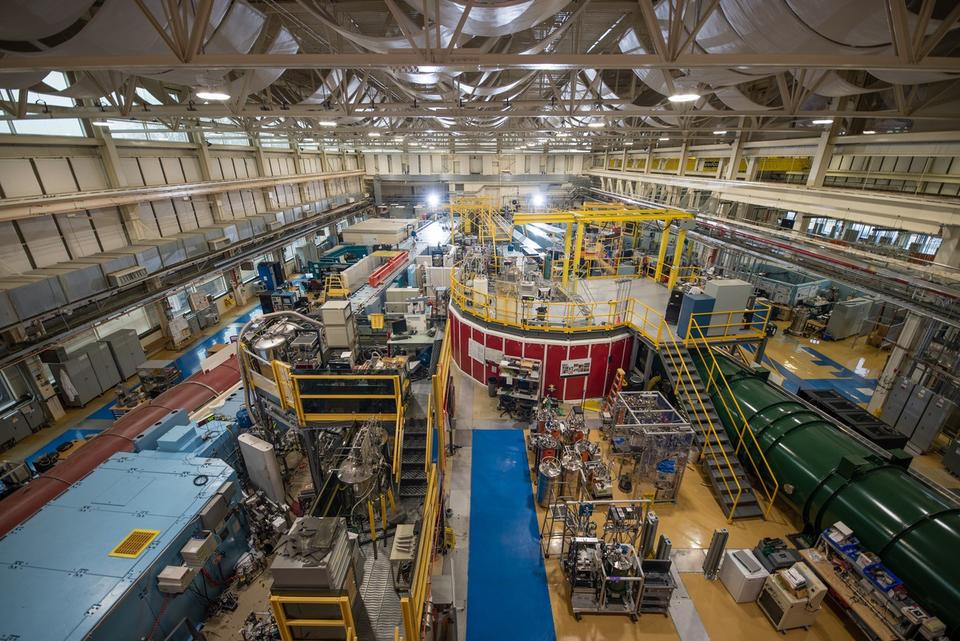- Research using neutron beams provides an economic return far larger than the cost of building and operating neutron facilities, according to an economic impact analysis.
- The study presented four case studies involving the impact of neutron research on different technologies, highlighting the value of neutron science to varied sectors of the economy.
- The study also highlighted how the lack of domestic capacity in neutron science has negatively impacted U.S. innovation and offered recommendations on how to strengthen U.S. programs in the field.

Federal facilities that offer neutron beams for U.S. industry play an outsized role in bringing new goods to market more quickly and cost-effectively, according to an analysis of neutron science’s economic impact.
The study, conducted by the nonprofit research institute RTI International, focuses on quantifying the national economic benefits derived from investments in three neutron scattering facilities operated by the U.S. government: the NIST Center for Neutron Research (NCNR), the Oak Ridge National Laboratory (ORNL) High-Flux Isotope Reactor, and the ORNL Spallation Neutron Source. The study, funded through a cooperative agreement with NIST, also provides insights into ways of keeping the United States competitive moving forward in areas involving neutron research, including infrastructure needs.
Neutrons are subatomic particles that can penetrate materials more deeply than can X-rays and other probes of matter. Researchers can use neutron beams to discover new things about the properties of materials, making neutrons important in scientific research fields from materials science to the physical and life sciences. Neutrons often reveal what X-rays cannot; for example, they can more easily image and study light atoms such as hydrogen. Hydrogen is common in living things and organic matter, making neutrons invaluable for scientific research related to drug development.
However, U.S. neutron scattering capacity has been declining since the 1990s. In 1985, the United States had five federal laboratories with neutron scattering capacity. Currently, only NIST and ORNL support neutron scattering instruments and offer large-scale “open user” programs, which allow interested parties from other institutions to conduct research using NIST’s and ORNL’s instruments.
RTI reports four different case studies of technologies influenced by research conducted at the three neutron facilities from 1998-2020. In addition to the case studies, RTI surveyed and interviewed 247 users of the facilities about their research results and analyzed the publications, patents and collaborative research networks formed at the facilities.
Among the findings:
- The facilities more than pay for themselves: The combined benefits of the scientific research described in the four case studies would fully cover the construction and operating costs of NCNR and the two Oak Ridge facilities, even if only 6%-11% of the benefits were attributable to neutron scattering research.
- A cost-benefit analysis of the case studies indicates a substantial economic return as well: Assuming neutron scattering accelerated the development of the selected case studies’ technologies by just two years — a conservative estimate, according to expert testimony RTI obtained — the estimated rate of return is 2.67. In other words, for every dollar invested in the facilities, they returned $2.67 to the U.S. economy. And this was just four of the dozens of technologies and products that neutron research has influenced.
- The report suggests that the findings represent a small portion of total innovation influenced by neutron scattering infrastructure. RTI identified more than 22,000 scientific publications and 1,565 patents resulting from research conducted at federal neutron facilities between 1960 and 2020.
RTI further identified at least 372 U.S.-based companies that are known to have used at least one of the U.S. federal neutron sources. These include enterprises of large to small scale across nearly every industry in the United States.
Despite these benefits, most facility users RTI surveyed indicated that they had difficulty performing their research due to inadequate domestic capacity for neutron measurement science. A survey of 247 facility users identified that 77% of these respondents experienced issues due to insufficient capacity in the five years before facility shutdowns in 2020. Of the survey sample, 19% took research they could not complete in the United States to an international facility.
RTI offered recommendations for strengthening the U.S. neutron scattering system, including forming a federal leadership task force to create a decade-long plan for U.S. neutron scattering facilities, maintaining adequate funding for the three facilities that exist, and constructing new facilities to augment their capacity.
Report: A.C. Walsh, S. Nienow, J.M.S. Merker, E.C. Decker, C.N Strack, M.E. Salem, G. Martin and B. Shaw. Assessment of the retrospective and prospective economic impacts of investments in U.S. neutron research sources and facilities from 1960 to 2030: Final report. RTI International. Published May 2024.

